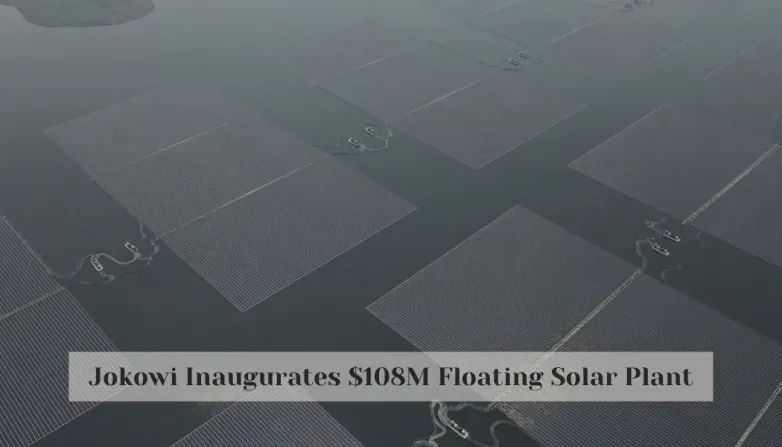Jokowi Inaugurates $108M Floating Solar Plant
- Experience the future of renewable energy as President Jokowi inaugurates a groundbreaking $108 million floating solar power plant in Indonesia. Join PLN Nusantara and Masdar as they collaborate to reach 1,000 MWp and help Indonesia reach a 23% renewable energy target by 2025.

On Wednesday, Indonesian President Joko Widodo inaugurated a $108 million floating solar power plant located on a reservoir in West Java province. The 192 megawatt peak project was developed by PLN Nusantara Power, a unit of Indonesia's state utility company Perusahaan Listrik Negara (PLN) and United Arab Emirates renewable energy company Masdar, a unit of Mubadala Investment Company. Regulations permit up to 20% of the reservoir's area to be utilized by the solar plant. Discussions are underway with Mubadala for the next phase of the expansion to reach up to a total of 1,000 MWp. Renewable energy accounted for 12.3% of Indonesia's energy mix in 2022, however due to the COVID-19 pandemic, the target of 23% by 2025 is unlikely to be achieved. President Jokowi is committed to continuing the momentum to reach the target.
What Are Indonesia's Future Renewable Energy Targets?
- Indonesia has an ambitious goal to increase its renewable energy mix to 23% by 2025.
- The floating solar power plant in West Java province is just the beginning, as discussions are underway with Mubadala for the next phase of the expansion to reach up to 1,000 MWp.
- The Indonesian Ministry of Energy and Mineral Resources has launched a number of initiatives to promote renewable energy in the country, such as the introduction of net metering and feed-in tariff schemes.
- The government has also established a renewable energy program, the Indonesian Energy Conservation Program (IECP) and a state-owned renewable energy company, PLN Nusantara Power.
A number of other projects are in the pipeline, such as the construction of a 1 GW solar power plant by 2020 and a 10 GW solar and wind hybrid energy project by 2025.
Indonesia is also looking to increase its geothermal capacity from 2.4 GW to 5.9 GW by 2025.
Also read


